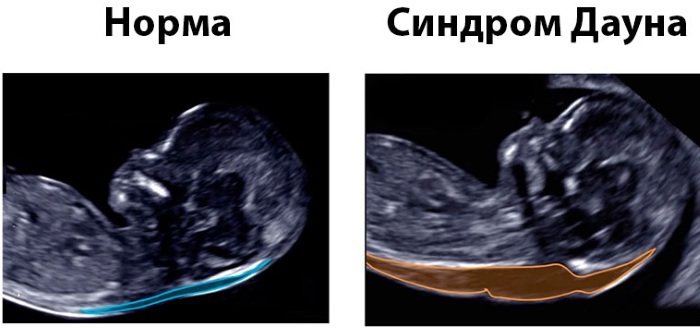Receptions Leopold-Levitsky - a palpatsionny obstetric multimethod applied to patients in prenatal care during pregnancy. The goal of the method is to determine the fetal position at the bottom of the uterus and its previa at the entrance to a small basin. This type of hand-pregnancy diagnosis, refers to one of the most common in obstetrics.
The content of the article:
- 1 Manual techniques in obstetrics history
- 2 What manual palpation prima used in obstetrics
- 3 The parameters determining the position of the fetus
-
4 Leopold-Levitsky techniques: rules for the implementation of the method
- 4.1 reception 1
- 4.2 reception 2
- 4.3 reception 3
- 4.4 reception 4
-
5 Special external examination of the pregnant woman
- 5.1 The outer dimension of the abdomen and wrist joint pregnant
- 5.2 Outside the pelvic measurement
- 5.3 auscultation of the fetus
- 6 Contraindications
- 7 Video for admission Leopold-Levitsky
Manual techniques in obstetrics history
First manual palpation techniques used by the Scottish physician and father of Obstetrics William Smellie (1697-1763). First Inspection mothers conducted by scientists in 1752. diagonal conjugate was measured, conducted a bimanual pelvic examination.
Reliable information about the history of the origin of techniques Leopold-Levitsky of today is very small. Perhaps one of the founders of this technique was a foreign obstetrician Joachim Levitsky dealing with obstetric practice in the XIX century. Unfortunately, precise information about the dates of his birth and death for today has been preserved.
What manual palpation prima used in obstetrics
In addition to receiving Leopold, there is a whole range of manual methods, palpation of the abdominal wall of the pregnant women.
There are 2 groups of similar obstetrical manipulation:
- diagnostics;
- therapeutic.
Therapeutic methods include prophylactic head rotation, digital enlargement of the uterus, manual removal of the placenta, and so on. Leopold techniques in obstetrics are diagnostic.
Leopold-Levitsky techniques in obstetrics, as a rule, carried out at 16 weeks of gestation. During this period the locomotor structure fetal carefully palpated and detectable only tuberosity. In late prenatal period, formed elements of the fruit, let palpatsionno pinpoint its position.
Pius Leopold-Levitsky palpatsionny not the only method used in obstetrics.
There are a number of handheld diagnostic tools that determine presentation and position of the fetus:
- Receptions Muller and Gofmeyera. Allow to determine whether the size of the fetal head with the pelvic size of a pregnant patient;

- techniques Horvitz-Higara, Snegirev, Piskachek, Gentera. Used to measure the diagonal conjugates.
Despite advances in technology, including obstetric equipment, hand-held obstetrical techniques relevant today. Palpatsionnye methods help reduce the risk of injury and death at the exit of the fetus from the mother's womb.
Handheld manipulator techniques allow new mothers at palpation of the abdomen to determine fetal position. Hence, determining the presentation, an obstetrician plans to further actions aimed at the most successful delivery.
Before birth the obstetrician should be aware of the location of the fetus in the womb of mothers. Since the successful delivery largely depend on the position in which it is in the later stages of pregnancy.
The parameters determining the position of the fetus
Fetal position allows him to correlate the positional axis with the longitudinal axis of the uterus. The most common position of the embryo in the uterus - longitudinal (95%). Rare cases include oblique and transverse position.
Defined fetal position in the uterus by palpation (probing) its major parts. This allows the obstetrician to identify the position of the unborn baby in relation to the planes of the pelvis.
Palpation abdomen of a pregnant patient, diagnosed 3 kinds of presentation of the fetus:
- golovochnoe. The head of the fetus is in front of the pelvic cavity;
- pelvic. The fruit is buttocks at the entrance to the pelvis;
- brachial. fetal head has entered the pelvis and palpation palpated his shoulders.
Determination of fetal position allows us to identify its position in the uterus.
As a rule, when viewed from a pregnant diagnosed several positions:
- longitudinal. When the longitudinal position in the bottom of the uterus palpated pelvis or the head of the fetus;
- cross. In the case of large transverse position of the fetus in the uterus bottom can not be felt and therapeutic measures are required to move it in the longitudinal position;
-
oblique. Diagnosed in rare cases. Just as in the transverse arrangement requires movement of the fetus in the most appropriate position for successful delivery.

The most common longitudinal position and fetal presentation. This is due to several factors. One possible reason for the longitudinal previa - is that the length of the embryo and the uterus greater than their width. Therefore, such an arrangement is due to the most comfortable position of choice by the fetus.
Typically in a longitudinal presentation, the fetus head is down.
This has 2 reasons:
- the law of gravity. Head - the most difficult part of the fruit is drawn down under the influence of the law of attraction;
- adaptation. Since the upper part of the fruit with his head already part of the hip, it is more comfortable to place a narrower portion in the mother's pelvis, and one that is wider in the department uterus.
Methods Leopold-Levitsky in obstetrics palpatsionnoe oriented precisely on determining the location and presentation of the fetus. Before starting the palpation, the patient explained the essence of technique, and she gives consent to the procedure.
Leopold-Levitsky techniques: rules for the implementation of the method
Before proceeding to the feeling of the abdominal wall pregnant patient is recommended to go to the toilet and to empty the bladder to prevent possible discomfort on palpation.
Before you start feeling the patient is prepared:
- obstetrician, explained the procedure to maternity;
- pregnant woman lays down on the couch belly up.
According to the doctor's request, the patient bends the knees, moving them in a vertical position. Then the doctor starts palpatsionnym procedures. Obstetrical procedure manual techniques Leopold-Levitsky, palpation of abdomen of a pregnant, consists of 4 steps.
reception 1
The purpose of the first dose is to determine the fetal position in the bottom of the uterus. A doctor holds palpation, while facing the patient lying on the couch. Palm surface, obstetrician palpable upper abdomen pregnant.

Following reception technique 1 Leopold, palm doctor are closed at the upper part of the stomach, near the bottom of the uterus. The doctor - an obstetrician careful palpation, pressing movements determines the level of standing uterus and the fetal position in her.
It is determined by the position of the fetus in the uterus by probing the bottom of its parts. To touch the head of the embryo has developed there as a large, round, mobile (ballotiruemaya) part, and pelvis as a myagkovataya fixed part. When oblique and transverse position of the fetus in the uterus bottom part not palpated.
reception 2
The following method determines the positioning of the fetus. Without taking his hands from the abdomen, both arms are lowered on top of the doctor on the sides of the uterus, approximately to the level of the navel. Key to palpation its position held gradually with alternate hands by press on the lateral abdominal wall of pregnant.
Gradual palpation helps the doctor determine the direction of placement of the fetal back and the top. When the feeling fetal rest palpatsionno felt dense smooth-surface portion and smaller dimples limb.
reception 3
At this stage the fetal presentation, t. E. its position in relation to the entrance to a small basin. Palm doctor moves down the abdomen, in the area of the pubic symphysis. Palm with protruding thumb and four other fingers allocated in different directions, is applied at the entrance to a small basin.
Further hand with fingers spread fetal engagement portion, and is determined by its side previa inlet pelvis. Head at the entrance to the fold palpation felt as round, mobile (ballotiruemaya) portion and if it is detectable, is defined as the presentation head.
Another type of previa - a pelvic. He is diagnosed if groping rounded part is static and is not running for.
reception 4
It is used just before birth. The doctor becomes the face at the feet of the pregnant woman and puts her hands to the branches of the pubic bone. Moving along the surface of the palm of the pelvis planes, the doctor will determine the fetal position at the entrance to the pelvis.
Laterally disposed palm move towards each other. If the fingers are closed the hands of a doctor in front of the pelvis and buttocks can be felt or the fetal head so he is at the entrance to a small basin.
If the doctor's hands are not closed - it indicates that the lower part of the fetus is already between the planes of the pelvis of pregnant.
Leopold-Levitsky techniques in obstetrics focused primarily on the determination of the position and the position of fetal presentation. However, in the prenatal period is also important to fix the size of the pelvis of a pregnant, the height of standing uterus, conduct auscultation of the fetus. This will help the doctor to carry out the most efficient delivery.
Special external examination of the pregnant woman
Leopold Levitsky techniques in obstetrics include a special outward-comprehensive examination of the pregnant woman.
In addition to palpation, a cursory examination of the patient assumes the event:
- the patient's stomach is measured by measuring tape for determining its circumference;
- measured elevation standing royal bed;
- determined distance dimensions between parts of the pelvis of pregnant;
- are heard the baby's heartbeat.
Special obstetric examination held by a physician using the following tools:
- of tape;
- special obstetric stethoscope;
- Martin tazomera.
The outer dimension of the abdomen and wrist joint pregnant
After palpation method Leopold Levitsky, the next step pregnant visual inspection - is measured waist circumference and standing uterus by means of tape.
To do this, a patient lies on a couch with a smooth legs outstretched. The doctor puts one end of the tape to the symphysis pubis area, stretching along the tape stomach, pulling the other end of the field to the uterus, measuring the height of her standing.
This is followed by measurement of the pregnant belly circumference. To do this, the patient's stomach is wrapped across the measuring tape, which edges are closed on the navel. Also, when external examination determined carpal joint size r. N. Soloviev index. It is measured by means of tape, wrapped around the wrist.
Outside the pelvic measurement
For the most successful delivery doctor - an obstetrician is extremely important to know the size of the pelvis of pregnant patients. Dimensions of a large pelvic determined by measuring the diagonal conjugates (distance from the center of the front surface of the sacral promontory to the middle of the lower edge of the pubic symphysis).
To measure the shape and size of the pelvis is used tazometr Martin. It is a measuring device such as calipers, but with curved ends which are provided with plastic buttons.
When measuring the pelvis tazomera takes 2 hands. The index fingers of both hands are applied to a button, located at the ends of tazomera. physician's fingers are placed below the end of the measuring device. When measuring, they are initially applied to the lateral thigh ostyam. The physician then slowly moves them up by applying to the wings thigh tazomera buttons.
tazomera through measurements performed sacral diamond. Determining the size allows you to get information about his condition, possible deformation. Rhombus sacrum in a normal state has a square-shaped, diagonal size of 10-11 cm and 11 cm vertical.
In measurements of a pregnant pelvic, transverse measurement is carried out 3 and one direct measurement of a large basin. The first measurement determines the distance between the front and upper edges of the iliac bones (spinarum distance), the normal size of 25-26 cm.
Before the measurement, the doctor fingers groping for the edge of the iliac bones of the pelvis. Further applies to these places tazomera edge and produces measurement.
The second transverse dimension measured is directed to the most remote distance between the edges of the iliac crest of the pelvis (kristarum distance). The standard size in determining this distance is equal to 28-29 cm.
Tazometrom of the pelvic measurement Martin kritsarum for measuring distance is held by the following algorithm:
- The doctor sits down or gets to a pregnant person. The patient lying on his back, driving his legs with each other without bending their knees.
- Obstetrician picks up tazomera, applies it to the furthest edges of the iliac bones and produces measurement.
Next cross measurement determines the distance between the greater trochanter of the hip bone (Trohanterika distance).
To determine this distance, the doctor asks the patient to bend and straighten the legs near the hip joint. Next buttons tazomera, an obstetrician from both sides apply to the greater trochanter of the hip bones. Thus, the so-called measured distance Trahonterika, standard size which is 30-31 cm.
Further measured straight outer pelvis size. To this end, at the request of the doctor the patient is turned onto its left side and bend the bottom leg. To measure outer conjugates buttons tazomera suprasacral arranged between the pit on the back and the middle of the upper edge of the pubic symphysis. Standard size after measuring 20-21 cm.
auscultation of the fetus
Another obligatory external study - listening to the fetal heart rhythms. For this purpose, special obstetric stethoscope, which is a short rigid tube in the form of double-ended socket.
To properly set the heartbeat of the fetus, the doctor will need to find the optimum point with a clear listening to heart sounds.
When cephalic fetal heartbeat listening point will be below the navel of the patient. If diagnosed breech presentation, the heart beats are heard above the umbilical scar patients. Normally, the rate of heart contractions embryo is 120-160 beats per minute.
| Special External obstetric examination before birth | ||
| A list of ongoing studies | The essence of the procedure, | goal |
| Receptions Leopold-Levitsky | Palpation of the abdomen and the area of the pubic symphysis. | Diagnosis of fetal position in matkk and its presentation at the entrance to the pelvis. |
| Definition of abdominal volume | Measurements of a pregnant belly with the help of tape. | determining the height of the uterine fundus and abdominal circumference pregnant. |
| Measurement pelvis dimensions | The measurements of the pelvis and the diagonal conjugates by tazomera Martin. | Opredeleeie structure and size of the pelvis to identify, abnormalities complicating delivery. |
| Auscultation | Listening to the pregnant obstetric stethoscope. | Determining fetal heart rhythms. |
Contraindications
Apply to pregnant palpation techniques Leopold - Levitsky - effective method of prenatal diagnostics manual. All manipulations are carried out with extreme care physician, so as not to injure the fetus. The procedure itself is painless and the future of young mothers, unborn child for the first time, you need to relax and fully trust the experienced doctor.
Method palpation Leopold shows all women in labor. Since the definition of the position of the fetus in the bottom part of the uterus and pelvis in relation to the planes will allow the doctor to remove the most successful baby during childbirth. Methods of probing the abdomen of pregnant women is strictly not recommended to people without a medical and midwifery education.
Receptions Leopold - Levitsky contraindicated to practice independently at home. The fruit of the womb is of a very fragile structure. Therefore, in the absence of experience, a high probability of causing damage. Consequently, palpation of the abdomen of a pregnant obstetrics, conducted exclusively a health care professional in a clinical setting.
Registration of the article: Vladimir the Great
Video for admission Leopold-Levitsky
Reception Leopold-Levitsky. How to do:



